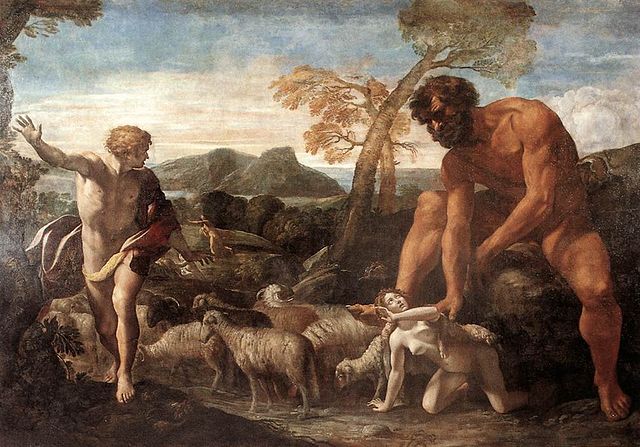Humbaba, originally known as Ḫuwawa in Sumerian, was a figure in Mesopotamian mythology. The origin and meaning of his name are unknown. He was portrayed as an anthropomorphic figure comparable to an ogre or giant. He is best known from Sumerian and Akkadian narratives focused on the hero Gilgamesh, including short compositions belonging to the curriculum of scribal schools, various versions of the Epic of Gilgamesh, and several Hurrian and Hittite adaptations. He is invariably portrayed as the inhabitant or guardian of the cedar forest, to which Gilgamesh ventures with his companion Enkidu. The subsequent encounter leads to the death of Humbaba, which provokes the anger of the gods. Humbaba is also attested in other works of Mesopotamian literature. Multiple depictions of him have also been identified, including combat scenes and apotropaic clay heads.
Old Babylonian terracotta plaque depicting Humbaba from the Louvre
Gilgamesh and Enkidu slaying Humbaba at the Cedar Forest (from Iraq, 19th–17th century BCE, Vorderasiatisches Museum Berlin)
The Sulaymaniyah Museum copy of tablet V of the Epic of Gilgamesh, describing the encounter with Humbaba.
Terracotta Humbaba mask from Ur, Iraq. 2004–1595 BCE. Sulaymaniyah Museum, Iraq
An ogre is a legendary monster depicted as a large, hideous, man-like being that eats ordinary human beings, especially infants and children. Ogres frequently feature in mythology, folklore, and fiction throughout the world. They appear in many classic works of literature, and are most often associated in fairy tales and legend.
Puss in Boots before the ogre. One of the platters on the table serves human babies (illustrated by Gustave Doré).
Puss in Boots before the ogre (illustrated by Walter Crane).
Hop-o'-My-Thumb steals the ogre's seven-league boots (illustrated by Gustave Doré, 1862).
Giovanni Lanfranco: Norandino and Lucina Discovered by the Ogre, oil on canvas, c. 1624








